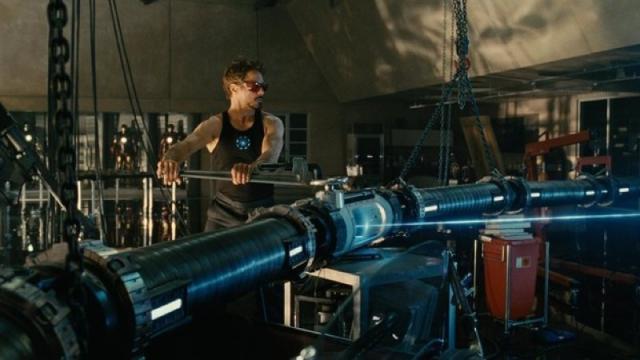Japanese particle physicists just received a welcome New Year’s gift: they won the right to name the superheavy element they spent a dozen years trying to create in an accelerator laboratory. Added bonus: it’s the first a team of Asian physicists has had the honour of naming a new element.
They beat out a rival joint team of physicists at the Joint Institute for Nuclear Research in Dubna, Russia, and the Lawrence Livermore National Laboratory in the U.S., for the honour.
Element 113, provisionally known as ununtrium, falls right between copernicum and flerovium on the periodic table. But you won’t find it anywhere in nature. The physicists had to create it in a high-energy accelerator — much like Tony Stark did in Iron Man 2, building his own private cyclotron to discover a new element of his own.
Granted, it took real-world physicists a hell of a lot longer to synthesise their new element, without the added advantage of a compelling cinematic montage to speed things up. The first hint appeared in 2003, when the joint US/Russia team of LLNL announced they’d spotted evidence of a new element, with the Japanese group at RIKEN reporting a similar observation in 2004, followed by yet another signature event in 2005. But the International Union of Pure and Applied Chemistry (IUPAC) makes the final call on such discoveries, and it remained unconvinced.
The problem is that really heavy elements don’t hang around very long; element 113’s isotopes lasted less than a thousandth of a second. That makes it very difficult to track the telltale nuclear decay chains that serve as signatures for a new element. “For over seven years we continued to search for data conclusively identifying element 113, but we just never saw another event,” group leader Kosuke Morita said in a press release. “I was not prepared to give up, however, as I believed that one day, if we persevered, luck would fall upon us again.”
His optimism paid off on August 12, 2012, when the group finally reported the long-awaited third event. This time the analysis of the data was conclusive enough to convince the IUPAC that this was a bona fide discovery — and with that honour comes naming rights for element 113. The agency will publish its official report to that effect in an upcoming issue of its Pure and Applied Chemistry journal. At the same time, IUPAC also confirmed the discoveries of elements 115, 117, and 118 by the LLNL and Dubna scientists.
Since it’s so difficult to create new heavy elements, why do physicists keep trying to do so? Well, science by its very nature never rests on its laurels. It’s all about new discoveries and pushing the boundaries of human knowledge. This kind of research will further improve our understanding of atomic nuclei.
But there’s an even more exciting prospect for physicists. Generally speaking, the heavier the element, the shorter its lifetime. However, the latest crop of synthesized super-heavy elements seem to show slightly longer lifetimes. For physicists, this is a tantalising hint of the theoretical “island of stability” in the periodic table: as-yet-undiscovered elements that could be both super-heavy and stable.
That will be the RIKEN group’s focus going forward. “Now that we have conclusively demonstrated the existence of element 113,” Morita said, “we plan to look to the uncharted territory of element 119 and beyond, aiming to examine the chemical properties of the elements in the seventh and eighth rows of the periodic table, and someday to discover the island of stability.”
